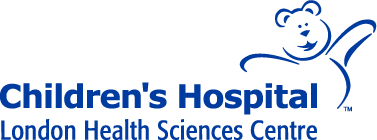Disclaimer to the Online Edition
This Manual has been designed for use in the NICU at London Health Sciences Centre (LHSC), London, Ontario, Canada, and represents clinical practice at this institution. The information contained within the Manual may not be applicable to other centres. If users of this Manual are not familiar with a drug, it is recommended that the official monograph be consulted before it is prescribed and administered. Any user of this information is advised that the contributors, Editor and LHSC are not responsible for any errors or omissions, and / or any consequences arising from the use of the information in this Manual.
EPINEPHrine
Indication
- Cardiac resuscitation to restore myocardial contractility and increase heart rate
- Treatment of hypotension; especially in the context of suspected or confirmed myocardial dysfunction
- Treatment of respiratory distress due to bronchospasm and subepiglottal stenosis and edema following extubation
Dosage Guidelines
Resuscitation
- IV (preferred route): 0.2 mL/kg (0.02 mg/kg/dose) q3-5 minutes prn
- ETT: 1 mL/kg (0.1 mg/kg/dose) q3-5 minutes prn until IV access obtained
Hypotension/shock
- Continuous infusion: 0.01 – 0.2 microgram/kg/min IV.
- While neonatal pharmacological data is scarce, a dose range of 0.01 to 0.1 mcg/kg/min is intended for beta receptor predominant action to promote myocardial contractility. Titrate to response every 15 to 30 minutes. Doses exceeding 0.1 mcg/kg/min should be used with caution and warrants careful assessment of neonatal hemodynamics.
Respiratory Distress/Subepiglottal Stenosis and Edema
- Less than 5 kg: 0.5 mg/kg/dose
- Greater than or equal to 5 kg: 2.5-5 mg/dose
- Dilute dose to 2.5 or 3 mL in normal saline. Administer via nebulizer prn to maximum q1 hour
Administration
- ETT
- Inhalation
- IV direct; Follow or dilute dose with normal saline 3 mL
- IV continuous infusion
For patients 1 kg or less:
Use EPINEPHrine 8 mcg/mL
To make 50 mL of EPINEPHrine [8 mcg/mL] [0.4 mg/50 mL]:
Add 0.4 mL (0.4 mg) of EPINEPHrine [1 mg/mL] to 49.6 mL of solution
For patients over 1 kg to 3 kg:
Use EPINEPHrine 16 mcg/mL
To make 50 mL of EPINEPHrine [16 mcg/mL] [0.8 mg/50 mL]:
Add 0.8 mL (0.8 mg) of EPINEPHrine [1 mg/mL] to 49.2 mL of solution
For Patients over 3 kg:
Use EPINEPHrine 32 mcg/mL
To make 50 mL of EPINEPHrine [32 mcg/mL] [1.6 mg/50 mL]:
Add 1.6 mL (1.6 mg) of EPINEPHrine [1 mg/mL] to 48.4 mL of solution
- Administer via central line whenever possible
Adverse Effects
- Cardiac arrythmias, renal vascular ischemia, hypertension with cerebral hemorrhage and tissue necrosis with local infiltration.
- Hyperglycemia and hyperlactatemia are known sequalae of epinephrine infusion
Comments
- Vasoconstriction predominates over vasodilation at higher doses. Epinephrine at greater than 0.5 mcg/kg/min causes excessive vasoconstriction and possibly disorganized energy utilization leading to a decreased cardiac output.
- ETT route may lead to lower plasma concentrations
- Monitor IV site for extravasation. If extravasation occurs, consider use of phentolamine
- There may be a modest decrease in pulmonary vascular resistance as well as vasodilation of renal and mesenteric vasculature at low doses.
Supplied As
- 1 mg/mL amp
- 1 mg/10 mL syringe
- 1 mg/mL topical solution for inhaled use
- Supplied by Pharmacy as standard concentrations of 8 mcg/mL (supplied as 0.4 mg/50 mL of IV fluid ordered), 16 mcg/mL (0.8 mg/50 mL of IV fluid ordered) and 32 mcg/mL (supplied as 1.6 mg/50 mL of IV fluid ordered)
- At LHSC, standard concentration reference charts are available on the NICU Intranet site
References
LexiComp (Hospital for Sick Children), LexiComp Pediatric and Neonatal, Joynt C, Cheung PY. Treating Hypotension in Preterm Neonates with Vasoactive Medications. Front Pediatr. 2018 Apr 13; 6:86
